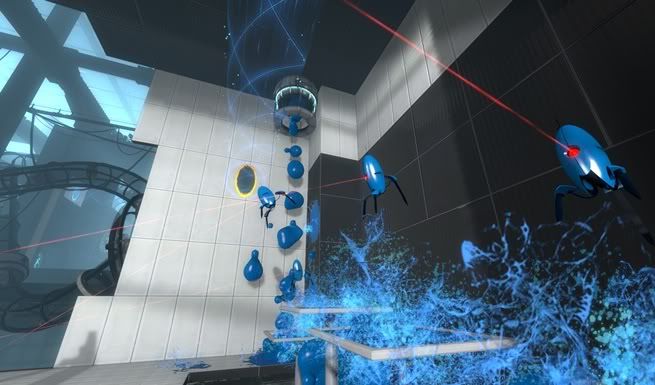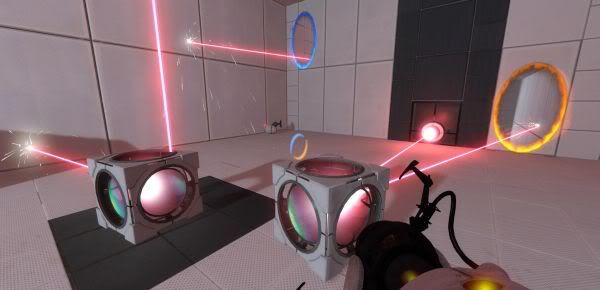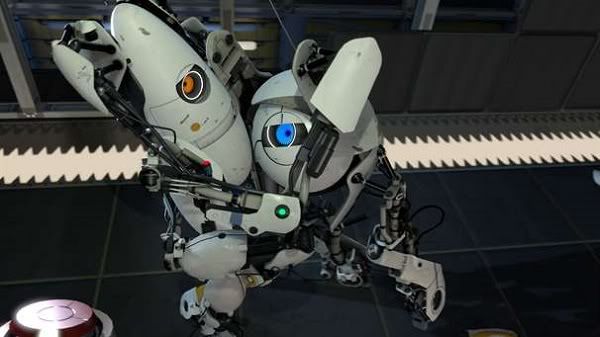Golden sun and its sequel The Lost Age worked together to create one of the best JRPG game experiences available anywhere, let alone the GBA. It wooed people with its amazing graphics, great battle system and the extremely clever Djinn Summon system that was a unique and completely new addition to the genre. After many years of fans clamouring for more, Camelot eventually delivered with its DS sequel Golden Sun: Dark Dawn, which I can rightfully say was most definitely worth the wait!
At its core Dark Dawn is a classic style turn based JRPG, you will choose what actions each character (in your party of 4) will perform and then combat is executed in order designated by the character and enemy agility rating. This of course is all standard fare for anyone who has had previous experience with JRPGs of any kind, but where the game truly shines is with what it builds on top of these classic mechanics and twists it offers to the mechanics of things such as equipment and summon monsters.
As previously mentioned you play the game with a party of 4 characters, which you can select from a pool of 8 people, offering 2 characters for each element. You are also able to switch these characters in and out of your main party whenever you wish, so you are not locked down too much. You start the game by being introduced to Isaac and Garet, the protagonists of the first game and their respective sons Matthew and Tyrell; you are also introduced to Karis as well (who is the daughter of Ivan, another character from the original). After a tutorial dungeon you set off with the latter three characters to begin your adventure, meeting other party members at various points throughout the game.
One of the things that I really liked about this game that I haven’t seen done much before is the way that Dark Dawn handles weapon critical hits. Rather than the classic style where you get a chance to deal more damage, here they offer what the game calls weapon unleashes. Each weapon will have a set of abilities that will do different things, usually 2-4 per weapon with some being shared across weapons. Every now and then the weapon will “unleash” one of these abilities when using a standard attack which will do things such as attack multiple enemies, increased damage or apply a status effect. With each ability having its own animation, some of which are really quite impressive, it adds more excitement to the standard brawler class and variation to the standard attack.
The Djinns in the game are Golden Suns equivalent to summon monsters from other RPGs, but here they provide a much more important role both in the games story and with battle mechanics. Djinni can be one of four elements (Venus, Mercury, Mars and Jupiter or earth, water, fire and air respectively) each having their own ability, which can be attack powers, buff abilities or healing. There are 72 Djinn in total that you collect throughout the game, with 18 of each element, you equip them to characters of your choice so that they will be available for them to use, also depending what combination of Djinn you have equipped, it will change the characters inherent class and abilities. Here is where things get different as each Djinn has 2 modes, active and standby, while active the Djinn provides a bonus to your characters stats, but when you use its ability it will go into standby and you will lose the stat bonus. Of course there are advantages to this, first being you get to use the ability but there are also more powerful summons that are available to use which require certain Djinn on standby, for example to summon Daedalus you will need 3 Venus and 4 Mars Djinn on standby, meaning that you are constantly balancing what to do with your Djinn in battles.
Another thing that this game does differently to other JRPGs are its dungeons, there are still random battles as you explore, but by using certain Psynergy powers (this games equivalent of magic) on the field you will be able to affect the environment in a number of ways. The developers have done a great job here as they have created very puzzle like dungeons, not unlike that of the Legend of Zelda series, so there are things such as block moving puzzles and element based puzzles (i.e melting ice with fire) which require some thought to complete. While none of these puzzles are particularly difficult it provides a whole other aspect to this game which helps to make it unique, another nice touch is that in heavy puzzle rooms there appears to be no, or at least a severely reduced amount of random battles.
There are also some other smaller things that I believe are worth a mention, one such thing that I like is the fact that your PP will recover as you walk around, so you will likely never find yourself out of mana, keeping you from getting stuck in some places. I also approve of being able to save anywhere you want and that the save menu also shows what your next objective is, so if like me you sometimes find yourself not playing a game for while, you can find out exactly what it was you were doing just by looking here, which is extremely useful.
Saying that though there are also some things that I did not like about this game, included in this is a absolutely pointless emote system which you use to respond to characters with, as Matthew is a mute hero, no matter how you respond I don’t think it changes the game at all, and some of the emotes are ambiguous in what they mean. Another thing is that the game ends on a really weird note, you defeat the boss and after that not too much happens, some character wrap ups, but the story is left almost completely open, this is obviously leaving it for a sequel, but it is annoying none the less.
I’m sure people who have played the original games are reading this and thinking “Hang on a sec, this sounds exactly like the first games” which brings another of the things that I noticed while playing the game. Throughout the whole game, the gameplay is pretty much identical to the originals in every aspect (including the hidden boss monsters), from what I can tell there are no new mechanics or anything. This is not exactly a bad thing, as the originals were excellent games, but if people did not enjoy the other Golden Sun games then they should look elsewhere, as this does nothing to attract a new audience.
While Golden Sun: Dark Dawn offers nothing new from previous titles and is pretty standard fare in the realm of JRPGs, it’s still a solid game that doesn’t do too much wrong and is likely one of the best games that I have on my DS. With the main story clocking in at around 25 hours there is quite a lot of game to get through, and there are also bonus dungeons and hidden bosses to explore once the game is completed. I would have a hard time recommending this game to people who are not fans of either the previous games or JRPGs in general, but for people that do like such things you are in for a thoroughly enjoyable experience.
4.5/5









